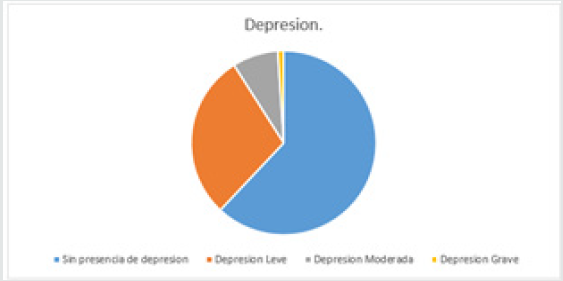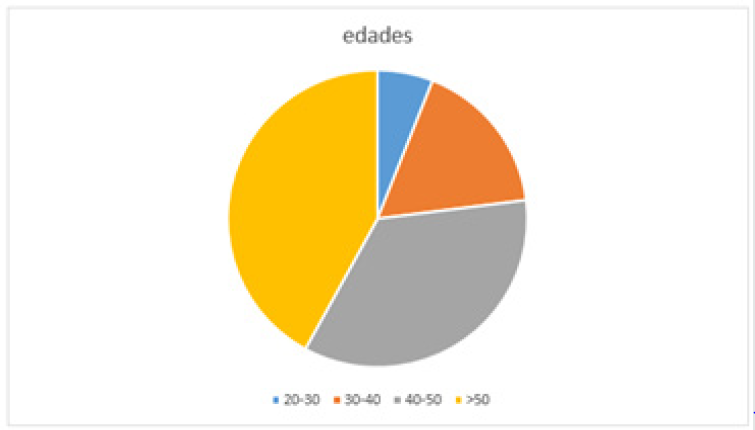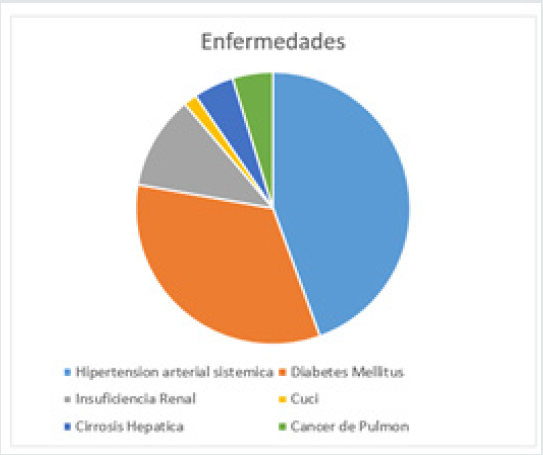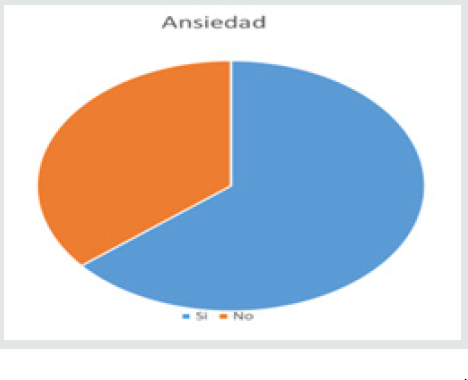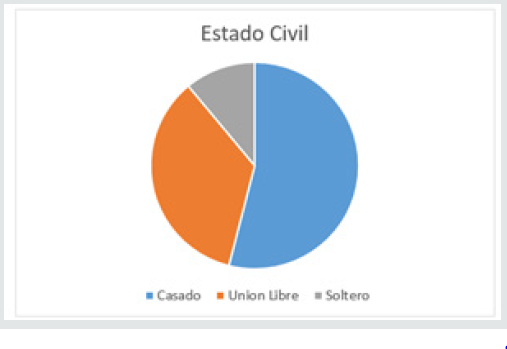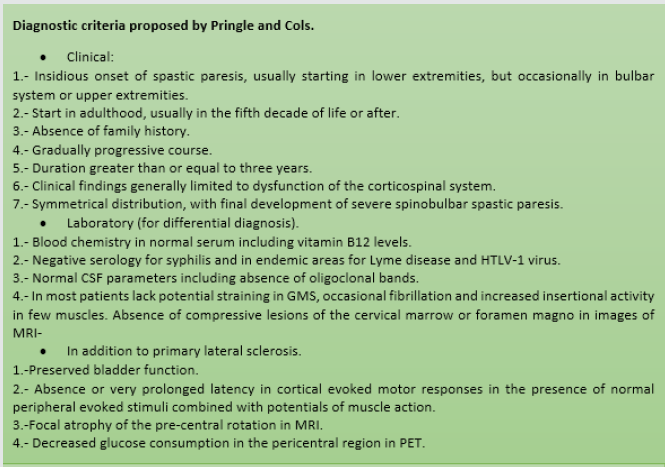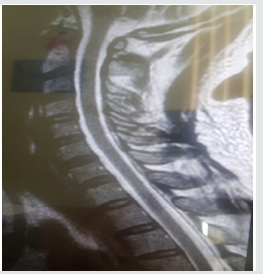Lupine Publishers| Journal of Neurology and Brain Disorders
Abstract
Background: The
scientific study of emotional intelligence (EI) in organizations has gained
considerable research activity over recent years because it is being concerned
with awareness and management of one’s own feelings and emotions in daily
living activities. The objective of the present study was to investigate the
relationship between EI of a group of psychiatric residents and their academic
achievement to see that whether proper training and evaluation by new educative
instruments can recompense any degree of shortage in EI.
Methods: Consistent with a
cross-sectional survey design, 31 psychiatric residents had been requested to
answer to The Schutte Self Report Emotional Intelligence Test (SSEIT), in June
2014, for examining the situation with respect to objective structured
examinations, like mini-Clinical Examination Exercise (mini-CEX), Objective
Structured Clinical Examination (OSCE), and chartstimulated recall (CSR)
scores, which had been taken in the earlier 6 months. SSEIT score of 90 had
been taken as demarcating point for dividing the sample population into two
parallel groups, including the first group with SSEIT score lower than 90 and
second group with SSEIT score equal to or more than 90.
Results: The response rate
was 93.54%. In line with the results, there was no meaningful relationship
between the aforesaid first group and second group as regards the relationship
between SSEIT’s score and the mean total score of Mini-CEX, OSCE, and CSR,
which had been examined in the preceding 6 months.
Conclusion: The
current study demonstrates that EI does not seem to be a fixed problem in
psychiatric residents, and enough exercise along with improvement of necessary
interrogating or clinical skills may improve or compensate for unsatisfactory
EI.
Keywords:Emotional
Intelligence; Objectives Structural Examinations; Psychiatric Residents
Introduction
The scientific study of
Emotional Intelligence (EI) in organizations has gained considerable research
activity over recent years [1]. Simultaneously researchers have investigated
and raised concerns about the appropriate way to measure EI in various studies
[2]. Although EI has been the subject of much attention at both popular and
academic level, only now are answers provided to some of the fundamental
questions posed about the construct [3]. Dulewicz, Higgs and Slaski confirm
that in literature there appears to be some debate about what constitutes the
domain of EI, about terminology used to describe the construct and about
methods used to measure it [4]. One method that has been used widely in
research to measure EI is the Schutte Emotional Intelligence Scale (SEIS) [5].
Dulewicz et al. state that EI is not a new concept [4]. Mayer, Salovey and
Caruso [6] define the concept of EI as the capacity to reason about emotions,
and of emotions to enhance thinking. EI includes the abilities to accurately
perceive emotions, to access and generate emotions in order to assist thoughts,
to understand emotions and emotional knowledge, and to reflectively regulate
emotions in order to promote emotional and intellectual growth [6]. Dulewicz
and Higgs [4] define EI as being concerned with being aware of and managing
one’s own feelings and emotions; being sensitive to and influencing others;
sustaining one’s motivation; and balancing one’s motivation and drive with
intuitive, conscientious and ethical behavior. It is apparent that from this
theoretical perspective EI refers specifically to the co-operative combination
of intelligence and emotion [7]. EI emphasizes the importance of self-awareness
and understanding, redressing a perceived imbalance between intellect and
emotion in the life of the collective Western mind [7]. Zeidner et al. further
state that EI also connects with several cutting-edge areas of psychological
science, including the neuroscience of emotion, self-regulation theory, studies
of meta-cognition, and the search for human cognitive abilities beyond
‘traditional’ academic intelligence. Given the core proposition that it is a
combination of IQ and EI that determines life success, a question arises as to
whether or not it is feasible to measure EI [4]. On the other hand, an
Objective Structured Clinical Examination (OSCE) is a modern type of
examination often used in health sciences (e.g. Midwifery, orthoptics, optometry,
medicine, naturopathic medicine, physician assistants/associates, physical
therapy, radiography, nursing, pharmacy, dentistry, chiropractic medicine,
paramedicine, podiatry, veterinary medicine). It is designed to test clinical
skill performance and competence in skills such as communication, clinical
examination, medical procedures / prescription, exercise prescription, joint
mobilization / manipulation techniques, radiographic positioning, radiographic
image evaluation and interpretation of results [8]. Simulation is a new
exciting technology incorporated in undergraduate medical curriculum. It is
well accepted by educators across the world to improve experiential learning by
enhancing the performance of medical professionals [9]. Simulation is defined as
imitation of the “real world” setting to model the environment, resources
needed, and the people involved [10]. Educators have encountered educational
challenges by reforming the curriculum, developing problem-based learning, and
promoting research as well as independent learning. Nevertheless, disparity
still persists between the preclinical and clinical environment. Preclinical
medical students have minimal contact with clinical cases and are apprehensive
when they commence their clinical years and internship. Many students feel that
they are inefficient in history taking, physical examination, diagnosis, and
management. Medical simulation has been adopted to bridge this educational gap
and provide an opportunity to learn from errors [11]. The objective of the
present study is to investigate the relationship between EI of a group of
psychiatric residents and their academic achievement to see that whether proper
training and evaluation by new educative instruments can recompense any degree
of shortage in EI.
Methods
A cross-sectional
appraisal scheme was used in the present assessment. Psychiatric residents were
informed about the objective and method of the study, voluntary format of
contribution, anonymity and privacy of information. The study was accomplished
during June 2014. Total existing population of psychiatric residents was
selected as the sample for this study (n=31). Among the total 31 psychiatric
residents, 29 participants (93.54%) responded to the evaluation. While one of
the participants was reluctant to participate in the assessment, another one
was absent during the assessment. Two different types of tools were used in the
current estimation. The first one was a demographic inquiry form that involved
four queries of sex, age, year of training and educational outcomes regarding
their objective structured examinations, including Mini-Clinical Examination
Exercise (Mini- CEX), Objective Structured Clinical Examination (OSCE), and
Chart-Stimulated Recall (CSR) scores. It deserves to be mentioned that Mini-CEX
is a method of appraisal that can be used to evaluate the clinical skill of
residents and can enhance student learning and develop student professionalism
in serving patients [12]. CSR, as well, has been utilized by active specialists
in medicine as a reliable and valid instrument to find strengths and weaknesses
in medical practice [13]. OSCE, too, is a modern form of scrutiny that is
planned to test clinical skills such as clinical examination, communication,
medical procedures / prescription, etc. [14]. The second instrument involved
the Schutte Self Report Emotional Intelligence Test (SSEIT), which was
developed by Schutte et al. [5]. This tool measures trait EI by means of 33
self-referencing items that evaluate EI level of the person. Individuals score
the level they agree or disagree with every single announcement on a 5-point
measure oscillating between 1 (strongly disagree) and 5 (strongly agree). Three
items among the thirty-three ones [15], are inversely scored. According to Schutte
et al., while the two-week test-retest reliability co-efficient of SSEIT is
around 0.78, the scale has high internal consistency with Cronbach’s alpha (α)
ranging from 0.87 to 0.90 (31). SSEIT scale has been used in different studies
with a range of samples including adolescents, adults, and secondary school
apprentices, and it is easy to apprehend and score [5]. SSEIT score of 90 is
usually taken as a cut-off point. While SSEIT score of 90 or higher includes:
low average (90-99), high average (100-109), competent (110-119), strength
(120-129) and significant strength (130+), SSEIT score of 89 and lower consists
of: consider improvement (70-89) and consider development (69 or less), based
on Mayer’s guidelines [15].
Statistical Analysis
Demographic
characteristics were analyzed by comparison of proportions regarding gender and
year of study and comparison of means (t-test) regarding age, scholastic
evaluative scores and EI. Data analysis was conducted using MedCalc Statistical
Software version 15.2. Statistical significance was determined as a P≤0.05.
Results
The demographic
characteristics of the study participants are described below in Table 1, and
there was no significant baseline demographic difference between male and
female participants regarding ethnicity, quantity, age and SSEIT score (Table
1). Among 31 psychiatric residents of the University of Social Welfare and
Rehabilitation Sciences, 29 participants (93.54%) answered back to the survey
and replied to the Schutte Self Report Emotional Intelligence Test in June
2014.One of the residents was reluctant to participate and another one was on
leave during the assessment. 17.24% (n=5), 27.58% (n=8), 24.13% (n=7) and
31.03% (n=9) of the participants were 1st year, 2nd year, 3rd year and finally
4th year post graduate trainee, respectively (Table 2). According to the
findings and based on ANOVA, there was no significant difference among four
groups of participants with respect to the SSEIT scores (Table 3). In the
current evaluation, SSEIT score of 90 was taken as a demarcating point. As a
result, while SSEIT score of 90 or higher could include: Low average (90-99),
High average (100- 109) , Competent (110-119), Strength (120-129) and
Significant Strength(130+), SSEIT score of 89 and lower as well could consist
Consider Improvement (70-89) and Consider Development (69 or less), based on
Mayer’s guidelines (Mayer, et al., 2002, p. 18). On the whole, in the present
sample population, 34.48% (n=11) of the participants had SSEIT score of 89 or lesser
(first target group, with a SSEIT score of 83.45+/-3.98), and 79.31% (n=18) of
the contributors had SSEIT score of 90 or higher (second target group, with a
SSEIT score of 101.5+/-9.03) (Table 4). While quantitatively and base on
‘Comparison of Proportions’ there was no significant difference among those two
target groups (z = -1.8383, p<0.06, C I 95% = -0.49, 0.01), comparison of
means showed a significant difference, with respect to SSEIT score, among them
(p<0.000) (Table 4). But as the main objective of the present assessment and
based on between-group analysis and comparison of means, while the mean total
scores of the 2nd Group ( with SSEIT score = or >90 ) was commonly higher
than the first group (with SSEIT score <90 ) in objective structured examinations,
including Mini-CEX, OSCE and CSR , no significant difference was evident among
those two target groups regarding their performance in those objective
educational tools for assessment of trainee’s skills(p<0.10, p<0.09 ,
p<0.16, respectively) (Table 5). Post-hoc power analysis showed a power
equal to 0.36 on behalf of this trial, which turned to power=0.74 in
compromised power analysis.
Discussion
Simulation based
education is a promising discipline that provides secure and effectual learning
platform for students. The clinical sessions can be planned, observed and
repeated to facilitate learning [16]. Exposure to simulation for medical
students is a valuable tool to enhance knowledge and student self-confidence at
a key transition period prior to beginning of internship [16]. Students report
difficulty in applying theoretical knowledge and perceive shortcomings in
integrating basic science knowledge with clinical practice [17]. Imparting
medical knowledge and skills without placing a patient at an increased risk of
complications can be attained through simulation sessions for undergraduate
medical students who do not have complete autonomy in diagnosis and management
of clinical cases [18]. One of the most challenging aspects of teaching
residents is identifying tools for assessment for learning. Assessment for learning
allows teachers to see where their residents are doing well and where they need
further instruction; as well, it allows teachers to target instruction during
the assessment to further residents’ understanding [19]. An OSCE, as the
prototype of such kind of innovative evaluations, usually comprises a circuit
of short (the usual is 5–10 minutes although some use up to 15 minute)
stations, in which each candidate is examined on a one-to-one basis with one or
two impartial examiner(s) and either real or simulated patients (actors or
electronic patient simulators). Each station has a different examiner, as
opposed to the traditional method of clinical examinations where a candidate
would be assigned to an examiner for the entire examination. Candidates rotate
through the stations, completing all the stations on their circuit. In this
way, all candidates take the same stations. It is considered to be an
improvement over traditional examination methods because the stations can be
standardized enabling fairer peer comparison and complex procedures can be
assessed without endangering patient’s health. As the name suggests, an OSCE is
designed to be objective (all candidates are assessed using exactly the same
stations (although if real patients are used, their signs may vary slightly)
with the same marking scheme, structured (stations in OSCEs have a very
specific task. Where simulated patients are used, detailed scripts are provided
to ensure that the information that they give is the same to all candidates, including
the emotions that the patient should use during the consultation.
Instructions are
carefully written to ensure that the candidate is given a very specific task to
complete, and, finally, clinicaloriented (the OSCE is designed to apply
clinical and theoretical knowledge. Where theoretical knowledge is required,
for example, answering questions from the examiner at the end of the station,
then the questions are standardized and the candidate is only asked questions
that are on the mark sheet and if the candidate is asked any others then there
will be no marks for them) [20,21]. So, competent performance requires not only
requisite knowledge and skills but also beliefs of personal efficacy to use
both effectively. Anyhow, the relationship between clinical experience and
student performance is complex. Well-organized and strategic learning styles
appear to influence the benefits of increased clinical exposure. Direct
observation of clinical skills is a critical first step in helping trainees to
improve their clinical skills [22]. Back to our discussion and according to the
findings of the present assessment, while significant difference was palpable
between two groups of psychiatric residents regarding emotional intelligence,
based on SSEIT score, no significant correlation was evident between that
factor and academic performance of participants. Such a result may not be in
harmony with the suggestion of Carrothers et al. [23] who had suggested using
EI as part of the selection process for medical students and Stratton et al.
[24], who stated that Individuals with low levels of EI may lack the ability to
relate empathetically with patients as they are unable to recognize feelings,
distress, and mood , or belief of McQueen [25] who said that low levels of EI leads
to a negative impact on the doctor–patient relationship . In contrast, our
finding was more in agreement with Stratton et al. [24] who found only a modest
correlation between EI, and students’ clinical skills assessed by standardized
patients in an Objective Structured Clinical Examination (OSCE). On the other
hand it could not deny the view of Arora et al. [26] who noted that higher EI
may play a role in maintaining good physician–patient relationships, improved
teamwork and communication skills, better stress management, and superior
commitment and leadership, since generally higher scores in the aforesaid
objective assessments were observable, as well, in the present assessment and
in the group with higher SSEIT score, though non-significantly. On the other
hand, non-significant difference between two groups regarding objective
assessment tools could be attributed to the preparation of psychiatric
residents, from the start, respecting basic principles and techniques of
interview, in general, and sympathy, rapport, verbal and non-verbal
communication, specially.
Such an inference is in
harmony with the standpoint of Stoller et al. [27] who had recommended that a
spiral curriculum should be used to develop EI skills of physicians. Also,
while Austin et al. [28] found a gender-based difference and significantly
higher overall EI and empathy in female medical students, as like as Carrothers
et al. [23], in the present assessment as well higher SSEIT score was evident
in female residents, but it was not a significant variance. Such discrepancies
may necessitate taking into consideration other interconnected factors that may
easily be ignored during scientific assessments, as like as culture, which has
been declared by Cherniss and Goleman [29] as a factor that can influence both
an individual’s response to an event and the subsequent response selection. In
this regard, anthropologists also suggest that cultures have conventions and
norms that influence the management of emotions in individuals [30]. These cultural
values create commonality and predictability among individuals in their
interpretation and response to emotional stimuli. Past research has shown that
Whites score lower on EI tests than Hispanics and Blacks [30], a finding that
is not in congruence with the later educational and social achievements.
Therefore, it is important to study EI in different cultures and ethnic
populations to gain insights into their emotional processes. One conclusion
from this assessment could include that, while enhancement of rapport, sympathy
and emotional intelligence skills, according to Stoller et al. [27], can be an
auspicious enlightening approach, selection of medical students based on EI is
a discriminating dogma. Also, too much stress on significance of EI by medical
mentors is not reasonable, since still a notable unpredictability exists
regarding the subject. Evidence based medicine cannot be established on
uncertain grounds. If psychiatric training can make low EI a trifling
phenomenon, so it can happen in other areas of clinical practice as well.
Anyhow , while small sample size, constrained number of objective assessment
tools, restriction of study to merely psychiatric residents, limitation of
study to a short period of assessment, lack of control or comparison group were
among the weaknesses of this study, which limit the generalization of its
results, it was simply a pilot exploration. Additional investigations in future
with larger sample populations and more systematized approach will certainly
help to explore in this regard more meticulously.
Conclusion
The current study
demonstrates that EI does not seem to be a fixed problem in psychiatric
residents, and enough exercise along with improvement of necessary
interrogating or clinical skills may improve or compensate for unsatisfactory
EI.
Read More Lupine Publishers Neurology and Brain Disorders Journal Articles: https://brain-disorders-lupine-publishers.blogspot.com/
